History of Vladimir
11th and 12th Centuries
Foundation
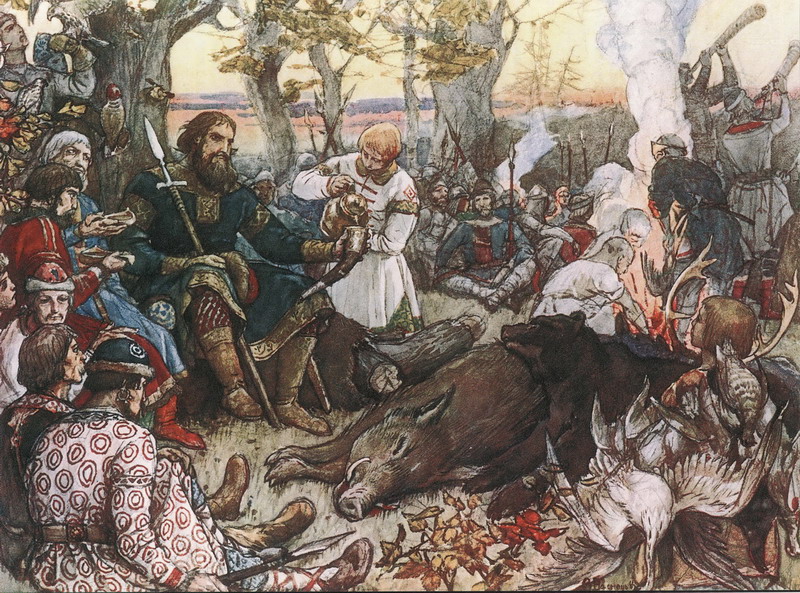
The foundation date of Vladimir is disputed. Traditionally the city was considered to have been founded in 1108 by Vladimir Monomakh and in 1958 the city celebrated its 850th anniversary. However in the 1990s historians researching chronicles discovered references to Vladimir the Great founding the city in 990. This date has now been officially adopted as the date of foundation of Vladimir. This view is not accepted by all historians however who point out that this would make the city around the same age as Suzdal and Rostov, even though chronicles mention how people of these cities occasionally looked down on Vladimir as a younger city. In any case Vladimir started to grow in importance during the reign of Vladimir Monomakh who reigned as grand prince of Kiev from 1113 to 1125. Vladimir was later developed as a fortification within the Rostov-Suzdal Principality, which was ruled by Prince Yuri Dolgoruky from 1108 to 1157.
Andrey Bogolyubsky and the Our Lady of Vladimir Icon
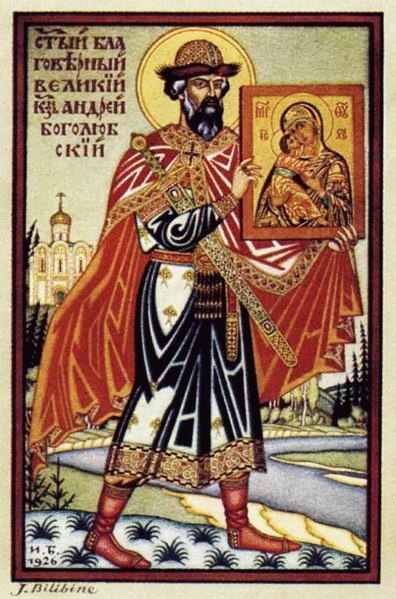
After Yuri Dolgoruky's death in 1157 his son Andrey Yurievich Bogolyubsky became prince of Rostov-Suzdal but moved the capital of the principality to Vladimir and the principality became known as the Vladimir Principality. Andrey Bogolyubsky had been living in Vladimir since 1155 even though he was prince of Vyshgorod (now Vyshhorod in Ukraine). When Andrey Bogolyubsky left Vyshgorod for Vladimir he took with him the Our Lady of Vyshgorod Icon which was reportedly painted by St Luke the Evangelist and given to Yuri Dolgoruky by the patriarch of Constantinople.
![]()
The icon became known as the Our Lady of Vladimir Icon and would become Russia's most sacred relic. To house the icon Andrey Bogolyubsky commissioned the building of the Dormition Cathedral in Vladimir. Vladimir secured its place as the most powerful Rus city in 1169 when Andrey Bogolyubsky sacked Kiev and captured many of its relics and treasures and took them to Vladimir. This event can be seen as the establishment of the Vladimir Grand Principality, with its prince becoming the most powerful in Rus lands.
Mikhail Yurievich
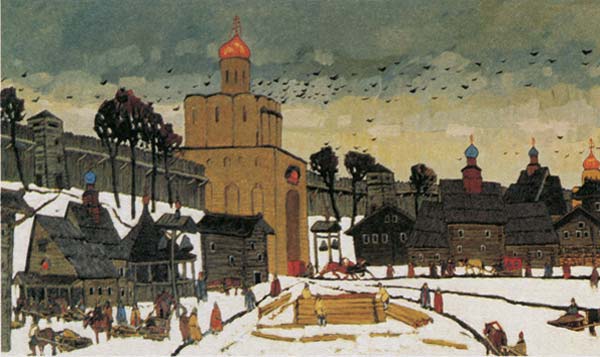
In 1174, Grand Prince Andrey Bogolyubsky was murdered by boyars in the residence he created for himself in Bogolyubovo just outside Vladimir. A power struggle erupted for the throne between the sons of Andrey Bogolyubsky's elder brother (known as the Rostislavy) and his own younger brothers (known as the Yurievichy). The boyars of Rostov and Suzdal also saw this as an opportunity to regain the significance they had lost to Vladimir. After Andrey's death his brother Mikhail (the rightful heir as the next oldest brother) sat on the throne in Vladimir, however the boyars of Suzdal and Rostov invited Andrey's nephews to be their princes. Mstislav Rostislavich sat in Rostov and Yaropolk Rostislavich in Suzdal. Yaropolk then laid siege to Vladimir. The city was able to hold out for seven days but Mikhail decided to surrender the city as its citizens were beginning to starve. Yaropolk became grand prince of Vladimir and Mikhail fled the city. However Yaropolk did not prove to be popular in Vladimir, partly as he gave many of the city's relics away to his brother-in-law and ally Grand Prince Gleb Rostislavich of Ryazan. In 1175 the citizens of Vladimir rose up, the Rostislavy brothers fled and Mikhail Yurievich once again occupied the Vladimir throne.
Vsevolod the Big Nest
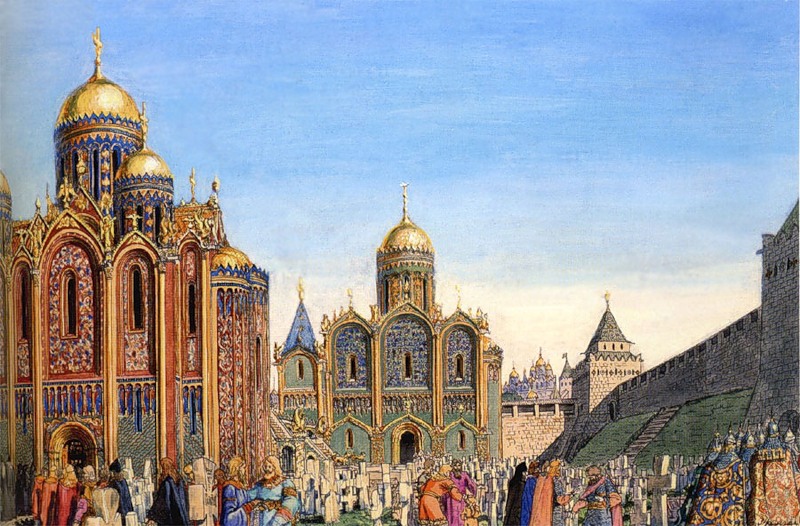
Conflict arose again in 1176 when Mikhail died and his brother Vsevolod the Big Nest became grand prince of Vladimir. The Rostislavy brothers saw their chance to regain the throne and launched a campaign against Vsevolod the Big Nest. The two sides met at the Battle of River Lipitsa where Vsevolod the Big Nest was victorious and the Rostislavy brothers fled to Grand Prince Gleb Rostislavich of Ryazan. Vsevolod the Big Nest finally secured the Vladimir throne at the Battle of River Koloksha in 1177 where he defeated the armies of the Rostislavy brothers and Gleb Rostislavich of Ryazan and imprisoned them all. Vsevolod ruled Vladimir until his death in 1212 and his reign can be seen as a golden age for the city. Under the Vsevolod the Big Nest the Dormition Cathedral was redeveloped and the Bogoroditse-Rozhdestvensky Monastery and St Demetrius' Cathedral were founded.
13th Century
Internecine War of 1212-1216

Vsevolod the Big Nest made it known that he wished to leave Vladimir to his eldest son Konstantin Vsevolodovich and Rostov to a younger son Yuri Vsevolodovich. This was not enough for Konstantin who demanded he be left both principalities, whereupon Vsevolod the Big Nest decided to leave him nothing. Yuri became grand prince of Vladimir upon his father’s death in 1212. In 1216 Konstantin met Yuri in battle on the Lipitsa River near Yuriev-Polsky. Yuri was defeated and forced to flee allowing Konstantin to take the throne. After Konstantin's death in 1218, his brother Yuri once again became grand prince of Vladimir.
Mongol-Tatar Invasion of Rus
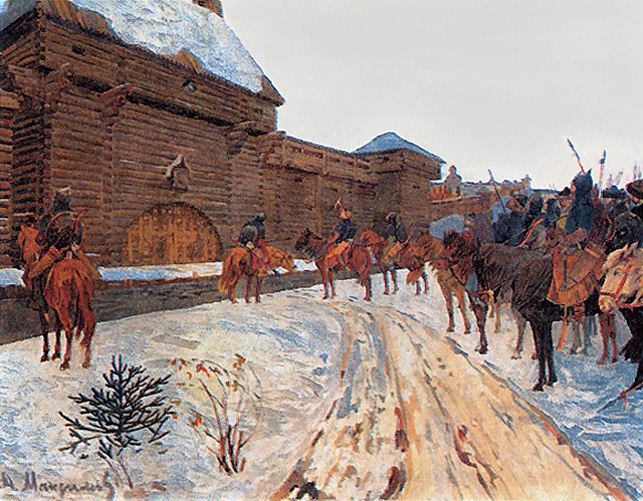
Although Grand Prince Yuri Vsevolodovich of Vladimir suffered defeat at the hands of the Mongols during the Battle of River Kalka in 1223, he subsequently made little attempt to defend his principality from a full-scale invasion which came in 1237. After Ryazan fell to the Mongol-Tatars in December 1237, Yuri sent his son Vsevolod Yurievich to meet the invaders in battle. A clash took place outside Kolomna in January 1238 where Vsevolod and the remnants of Ryazan's troops were defeated and Vsevolod was forced to flee to Vladimir. Another son of Yuri - Vladimir Yurievich was sent to Moscow to defend the city but Moscow too fell in the end of January and Vladimir Yaroslavich was taken prisoner. The Mongol-Tatars eventually reached the gates of Vladimir in February 1238.
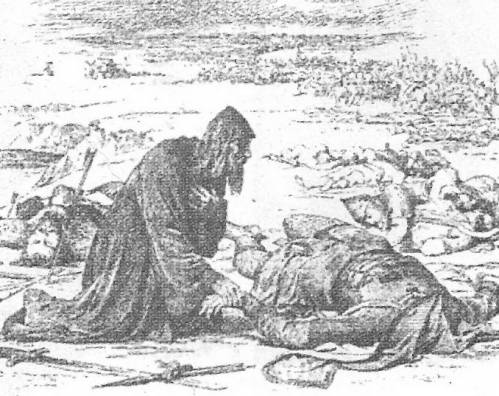
At the time Grand Prince Yuri was not in the city having left it to raise an army. The defence of the city was entrusted to his sons Vsevolod and Mstislav Yurievichy and the city's commander. The city managed to hold out for several days, during which time Vladimir Yurievich, who was captured in Moscow, was executed in front of his mother and siblings by the Mongols. When the city eventually fell it was brutally sacked by the invaders and many citizens were butchered. Grand Prince Yuri's wife, two sons and a daughter were also killed. Grand Prince Yuri himself met his end in the beginning of March 1238 when the troops he had raised were defeated at the Battle of River Sit. His headless corpse was later found by Bishop Kirill of Rostov, who took it to Rostov. Later it was reunited with the head and interred in the Dormition Cathedral in Vladimir.
Yaroslav Vsevolodovich
After the destruction of the Mongol-Tatar invasion, Prince Yaroslav Vsevolodovich left Novgorod where he had been prince to succeed his slain brother in Vladimir as the most senior Ryurikid prince. In 1243 he became the first prince to go to the Golden Horde where he was confirmed the most senior among Russian princes, upon his return he kept Vladimir as his residence, marking once more the city's seniority to Kiev. In 1245 Yaroslav was called to the Golden Horde once again and upon arrival Batu Khan sent him onwards to Karakorum, the capital of the Mongol Empire. Yaroslavl arrived in Karakorum in 1246 and witnessed the coronation of Great Khan Güyük. Whilst in Karakorum Yaroslav was granted the honour of dining with Töregene, the great khan's mother, however seven days later Yaroslav died, having supposedly been poisoned by Töregene.
Svyatoslav Vsevolodovich and Mikhail Khorobrit
Yaroslav Vsevolodovich's brother Svyatoslav Vsevolodovich succeeded him as grand prince of Vladimir in 1246. Svyatoslav tried to secure his position by giving his nephews appendages in an attempt to make them stop their attempts to persuade the khan to grant them Vladimir. However this was not enough and in 1248, when the two oldest nephews Aleksandr and Andrey were away in Mongolia, the third brother Mikhail Yaroslavich Khorobrit ousted his uncle and became grand prince. Svyatoslav retired to Yuriev-Polsky. Mikhail Khorobrit though was not to rule for long as in the same year he was killed at the Battle of River Protva fighting the Lithuanians.
Andrey Yaroslavich and Aleksandr Nevsky
Back in 1247 Mikhail Khorobrit's elder brothers Aleksandr Yaroslavich Nevsky and Andrey Yaroslavich went to the Golden Horde and then on to Karakorum where Andrey was given the yarlyk (patent) to rule in Vladimir by Great Khan Güyük, even though Batu Khan of the Golden Horde preferred the candidature of Aleksandr Nevsky - the elder brother and rightful heir. In 1251 Möngke became the Great Khan of Mongolia and in 1252 Aleksandr Nevsky returned to the Golden Horde to complain how as the elder brother he should be grand prince of Vladimir and that his brother Andrey was retaining some of the tribute for himself. Batu Khan supported Aleksandr Nevsky and sent a punitive campaign against Andrey led by a commander called Nevryui (some historians believe this was actually Nevsky himself). Andrey was defeated at Pereslavl-Zalessky and forced to flee to Novgorod and then Sweden, allowing Aleksandr Nevsky to take the throne. Eventually Andrey returned to Rus and made peace with Aleksandr Nevsky and Batu Khan, receiving Suzdal as an appendage.
Appendage Rus
Aleksandr Nevsky died in 1263 and was the last grand prince who permanently resided in Vladimir. After him several of the strongest Rus principalities would fight over the title of grand prince of Vladimir which remained the supreme title and was granted by the khan in the Golden Horde. These grand princes of Vladimir however would rule from their own principalities and Vladimir did not have its own dynasty of Ryurikid princes. More often than not internecine wars would break out in the struggle to be named grand prince of Vladimir, often involving Tatar influence. In one such war Vladimir along with 13 other cities was sacked in 1293 by Tyuden, the brother of Khan Toqta of the Golden Horde, to install his candidate of Prince Andrey of Gorodets as grand prince of Vladimir. In 1299 the Metropolitan of Kiev and all Rus moved to Vladimir - the final act of Vladimir eclipsing Kiev as the capital of Rus lands.
14th Century
Moscow's Eclipse of Vladimir
Throughout the 14th century the contest for the Vladimir throne was especially intense between the grand princes of Moscow and Tver. The Moscow Principality's case was strengthened in 1325 when the seat of the Metropolitan of Kiev and All Rus was moved from Vladimir to Moscow. The Moscow Principality's ability to control Novgorod and to ensure tribute was paid to the Golden Horde eventually led to its complete success. Vladimir was one of the cities sacked by Khan Tokhtamysh in 1382 in revenge for the success of Grand Prince Dmitry Donskoy of Vladimir and Moscow at the Battle of Kulikovo Field in 1380. In 1389 Grand Prince Dmitry Donskoy died and his son Vasily I Dmitrievich inherited the Vladimir Grand Principality which had been incorporated into the Moscow Grand Principality; Moscow had once and for all completely supplanted Vladimir as the most powerful Rus principality. In 1395 the Our Lady of Vladimir Icon was taken to Moscow to protect the city from invasion by Tamerlane. This can also be seen as an additional sign of Moscow's rise to supremacy.
15th Century
Talych's Campaign
In 1411/1412 (different accounts give different years) Vladimir was sacked by the Tatar army of Talych which was brought into Russia to help Daniil Borisov and his brother Ivan in their failed campaign to gain back the Suzdal-Nizhny Novgorod Principality from where they had been deposed by Grand Prince Vasily I of Moscow and All Rus. During the raid father Patriki of the Dormition Cathedral hid the cathedral relics and refused to tell the Tatars where they were even under torture. He was tortured to death and was later canonised as St Patrick (Patriki) of Vladimir.
17th Century
Time of Troubles
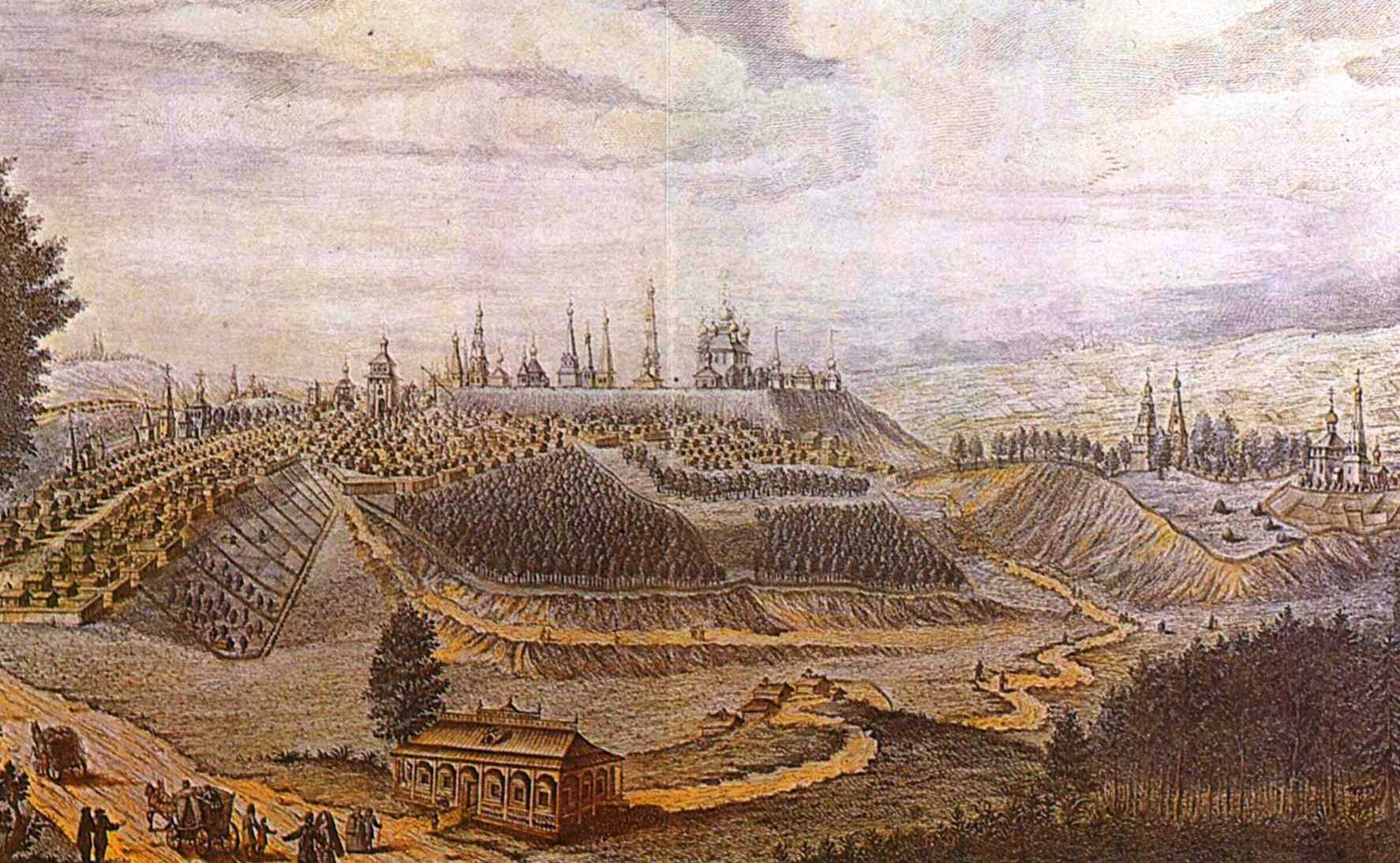
During the times of Troubles Vladimir recognised the Second False Dmitry as the true tsar, but in 1609 rebelled against the general Dmitry had sent to the city.
18th Century
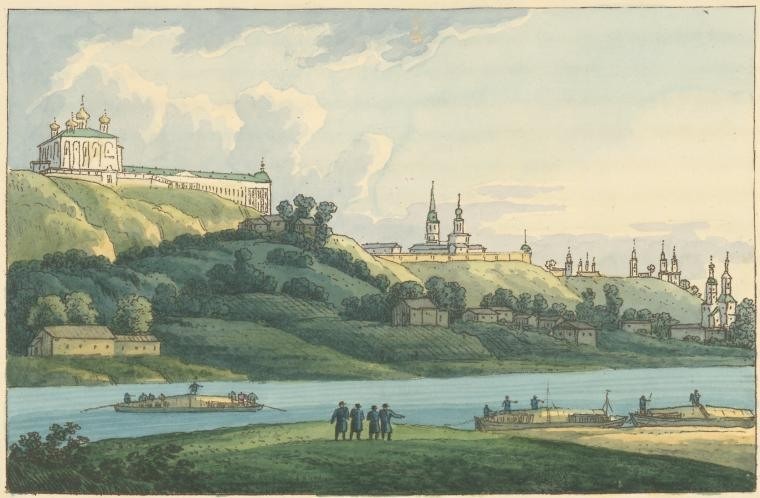
In 1719 Vladimir became the centre of the newly formed Vladimir Province of the Moscow Governorate. In 1723 the relics of Aleksandr Nevsky were removed from Vladimir's Dormition Cathedral so that they could be re-interned in the newly-established capital of St Petersburg. In 1788 Vladimir was made the centre of the Vladimir Viceroyalty and in 1781 a regulated city plan was adopted for Vladimir. In 1796 the Vladimir Viceroyalty was elevated to that of the Vladimir Governorate.
19th Century
Vladimirka
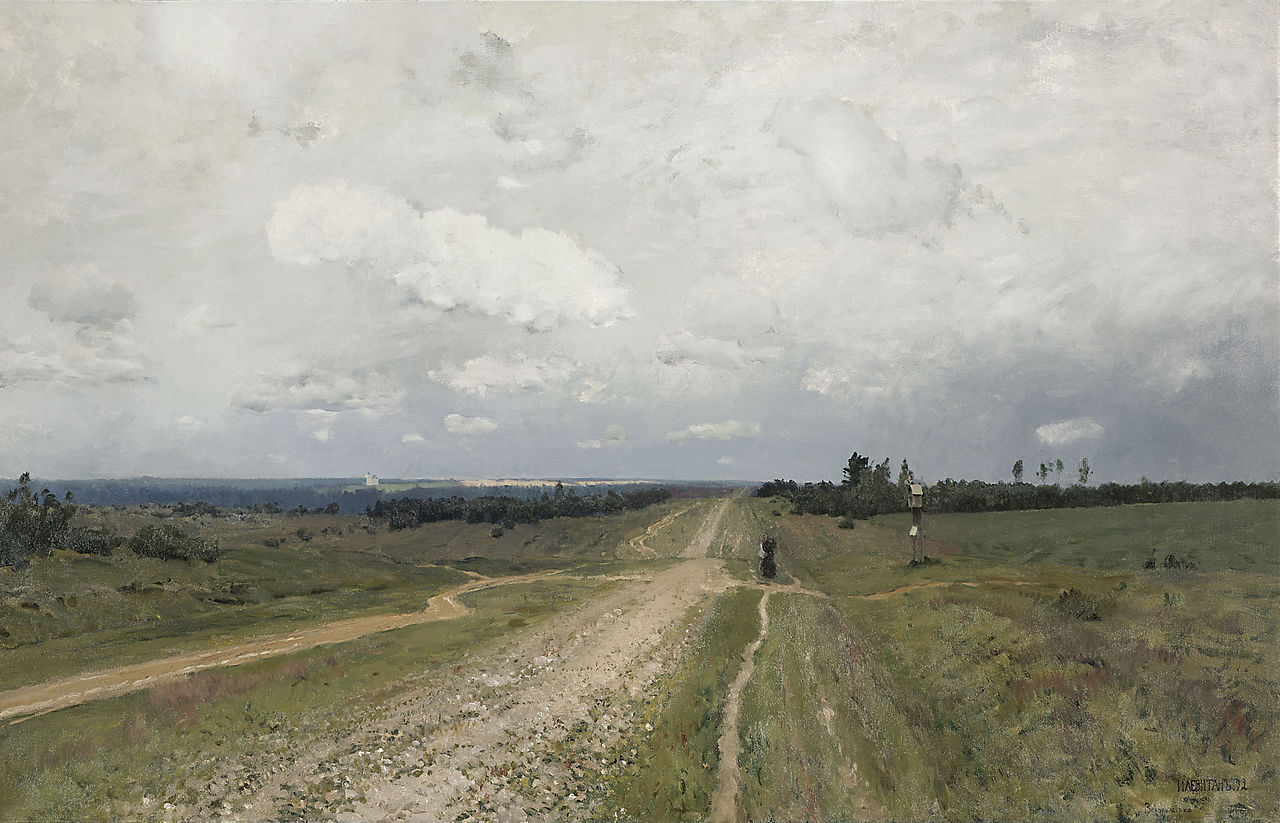
In 18th century the road which linked Moscow to Vladimir became synonymous with Siberian exile as it was along this road that exiles would start their journey from Moscow. The Vladimirka as it became known is referenced in many works involving Siberian exile, including works by Fyodor Dostoevsky, Aleksandr Herzen (who himself was exiled to Vladimir), Nikolai Nekrasov and the artist Issak Levitan.
20th Century
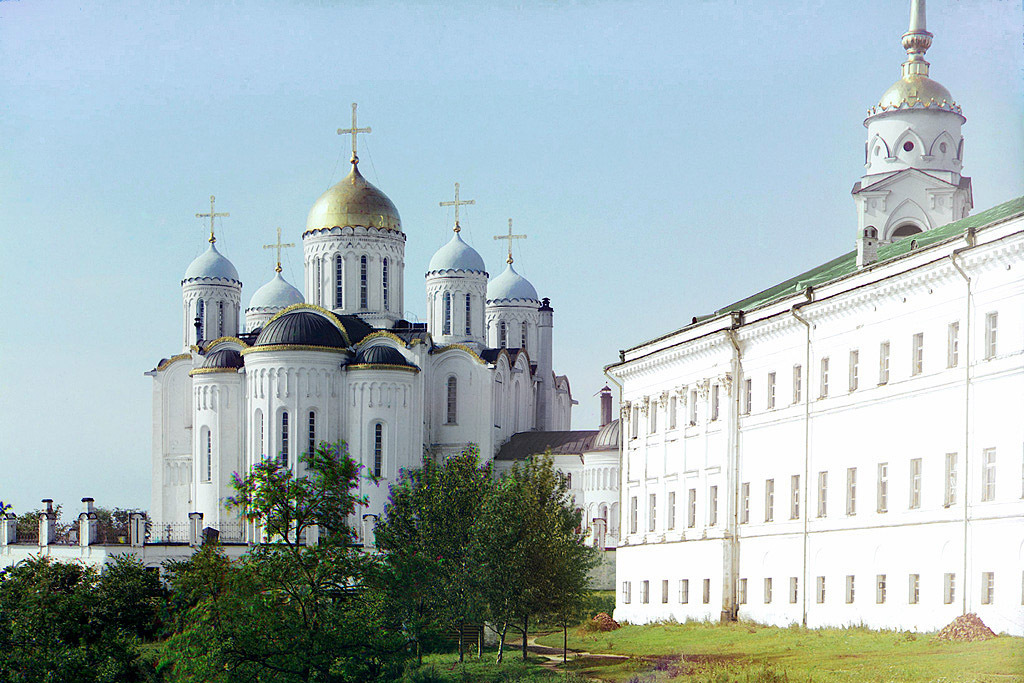
After Soviet power was established in Vladimir, the Soviets immediately set about industrialising the city, establishing many factories there. In 1929 the Vladimir Governorate was dissolved and Vladimir found itself as part of the Ivanovo Industrial Region. During the Second World War the Nazis did not reach Vladimir although like any other city its citizens were called up to fight - over 25,000 in total and almost half of these never returned home. In 1944 the city became the administrative centre of the Vladimir Region. In 1958 the Vladimir-Suzdal Historical, Architectural and Artistic Museum Reserve (usually just referred to as the Vladimir-Suzdal Museum) was established incorporating the architectural treasures of Vladimir and Suzdal and other places in the Vladimir Region. Also in 1958 the city officially celebrated its 850th anniversary, however in 1995 it held late millennium celebrations as based on new evidence found in the 1990s the foundation date was shifted from 1108 back to 990


 History
History